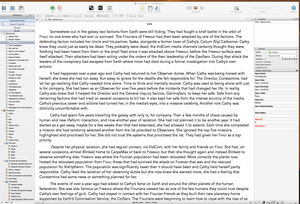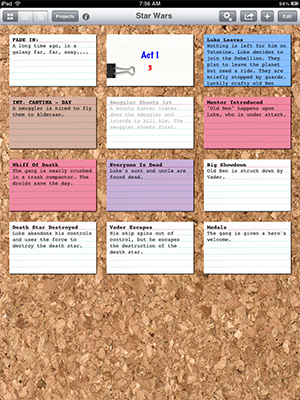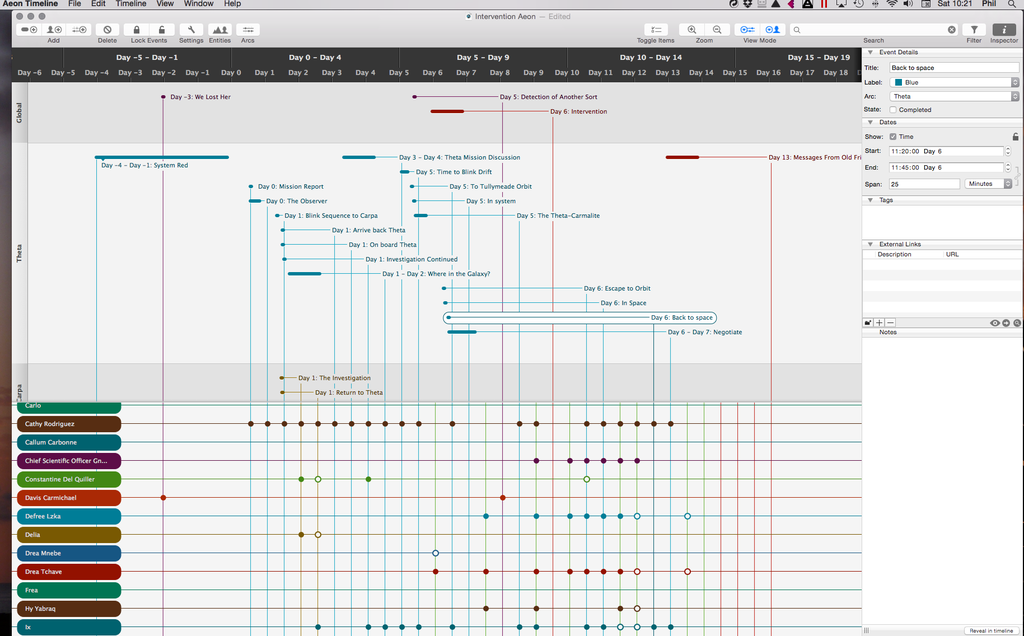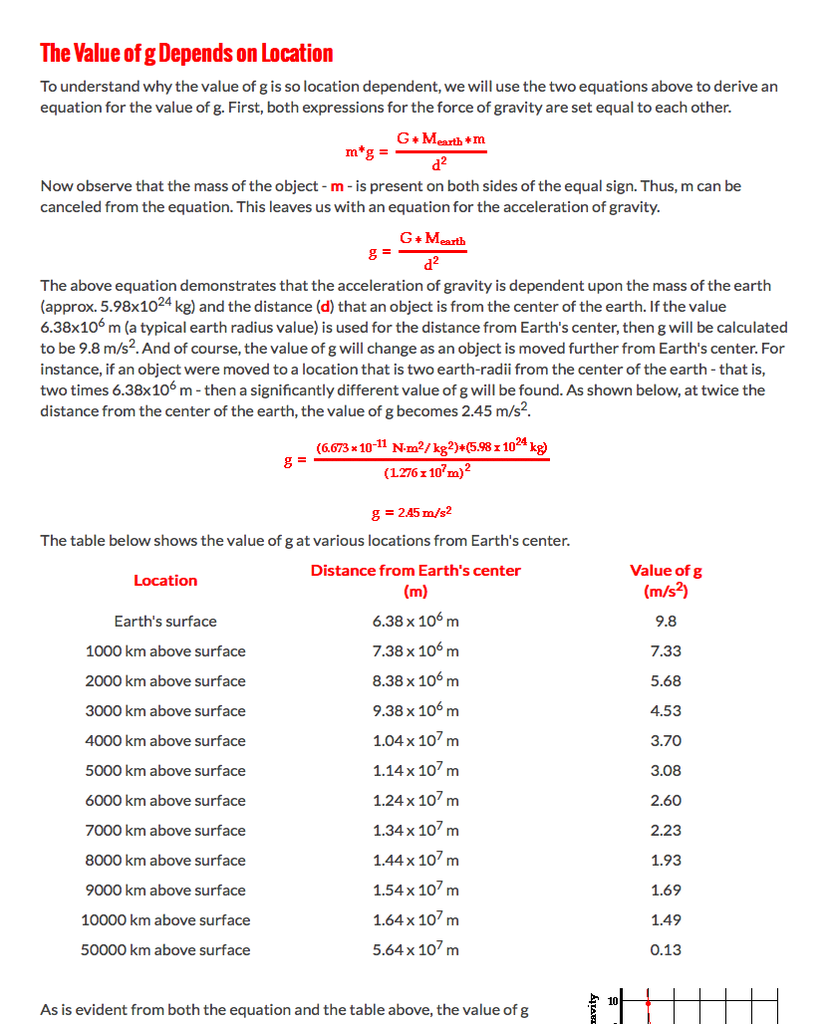Thinking of using the following cover and title for the Coming Soon title Grey
What do you think of the cover or title Grey 6749

Edit – Did not happen turned into Sailing Clear

Thinking of using the following cover and title for the Coming Soon title Grey
What do you think of the cover or title Grey 6749

Edit – Did not happen turned into Sailing Clear
That is the current status of this blog. I am supposed to write regularly and hopefully providing articles and comments of interest. All instead of just spouting updates on the progress, or lack of it, on my books.
The idea is to write other stuff which will attract interest form a broad readership. In turn this will lead to readers investigating this site and then hopefully clicking on a book description and consequently purchasing one of my offerings. Notice no links or embedded spam – is this a new approach? No, it just seems to have no impact so I’m trying a bit of reverse psychology. The statistics from this site tell me about click through traffic and pages read. Since my last post advertising my latest release and associated discount on the first part of the series, I have started several blogs but time and my own interest stopped a post going out.
I was going to comment on the Google tax deal and Apples quarterly sales in a hopefully witty way. Googles amount of tax paid to HMRC and the city’s reaction to Apple’s disappointing revenue and profits. If only more of the UK’s home industries had such disappointing results. Then there was the humour in watching the UK’s Labour Party trying to explain how we would still have a nuclear deterrent if we let our submarines sale without nuclear weapons. For real entertainment, we can all enjoy the US Presidential Election Candidate Selection Process. This seems to consist of a group of people from all parties who demonstrate their unsuitability at every occasion. Only another 9 months till the election. This is on the UK news almost as much as the other big story, namely the UK’s referendum.
As of this morning, 20th Feb, the UK apparently has a new deal agreed by the other member states. Does this indicate the sunset of the UK’s EU Membership or a positive renewal of our commitment. This is being described as meeting Cameron’s (the UK’s current Prime Minister) objectives and thus allowing him to campaign for a yes vote in what will probably now be a June referendum. I stated current as if he loses the referendum he may have to resign.
The yes vote is to stay in the European Union based on the changes agreed. At the moment the polls (Remember them in the last UK election) seem to provide a very mixed response. The Daily Telegraph had 51.5% in against 48.5% out. YouGov with The Times this morning has 45% leave against 36% stay. As with the 2015 election – more guess work.

One annoying point that the scaremongers report, is how the UK would be suddenly isolated outside the EU. The UK would still be one of the five permanent members of the UN Security Council. It would still be in NATO, World Health Organisation the IMF etc. It would still have too numerous to mention direct treaties with nation states including other EU members e.g. The Lancaster House Treaties between UK and France signed in 2010. It would still be a part of other pan-European organisations and legal processes. It would still be the 6th largest economy in the World. The sun will still rise in the East and set in the West. It will still rain – often.
For those scaremongering the other way, the same applies. The Common Market has changed out of all recognition. Some of this is good, some of this is done badly. The horrible farce that is the current migrant crisis and the never ending Euro crisis ( no it has not gone away, Greece was requesting more concessions as a condition fro backing the UK’s negotiation only this week) are caused by EU treaty and process failure. The EU like any organisation can be reformed from inside i.e. stay in and fix it. Some of the reforms the UK has asked for other member states want as well, they would not have agreed otherwise.
I must be honest – I am on the fence. The previous European referendum was on staying in what was then called the European Economic Community (EEC). The UK had actually joined The Common Market without a referendum and has not held a referendum since despite the vastly different environment that the EU now represents. I was too young to vote then. England, Wales and Northern Ireland were not asked about Scotland staying in the UK in 2014. The only referendum I have voted in was one on Alternate Voting, in 2011, where only 42% of people could be bothered to vote at all. The Alternate Voting and the EEC remain the only UK wide referendums ever held in the UK. Yes the mother of Parliaments, the cradle of modern democracy, has only bothered to consult the voters twice. The first of these was after the fact.
If it takes place in June, the planned referendum will be held before any legal treaty changes are made and before the European Parliament votes to accept the changes. It remains unclear what happens if the European Parliament rejects the changes agreed by the European Council (Heads of Government) or the Treaty Changes are not made. Many of partners in the European Union (Ireland, Netherlands etc) require their own referendums to approve treaties. Previous changes have not had a smooth ride through this process. The European Constitution vote or Lisbon Treaty is a good example. The first referendum on the Treaty of Lisbon held in 2008 was rejected by the Irish voters. A second referendum followed in 2009 where it was accepted. The UK was going to have a referendum but this was postponed after France and Holland rejected it. The Treaty was then changed. Others voted but the then UK Government signed it albeit after various concessions were created.
The Lisbon Treaty also states the explicit legal right to leave the EU and a procedure to do so. If the UK votes no in June, we will all get to see whether this procedure works, but don’t be surprised if there is not another round of negotiations and another referendum.
By the time the US elects it’s next President or even has the agreed party candidates the UK could be in the middle of a very major change. I might even get around to writing another book!
The writer’s craft was first posted in May 2015
I thought I would take a break from actual writing to show you some of the tools I use to put the story together. As an example I am using Intervention the second part of The Observer Series. Whether what I display makes it into the final cut we will have to see. I am over 50,000 words into the story.
The main tool I use is Scrivener, the chapter manuscript is in the centre of the screen with the list of proposed chapter headings, characters and places/scenes on the left. All my writing is done here and the formatting for eBooks and Paperbacks using Scrivener’s Compile feature.

In the continuing absence of an iPad version for Scrivener, I use Index Card when I am away from my desktop Mac. It does link with Scrivener but it s not the same. (Editors note: Scrivener now has full iPad version)

The next tool I use is to keep my timeline straight. This is Aeon Timeline which integrates with Scrivener. This one shows a couple of Arcs (chapters or scenes) with events and then cross linked to characters, scenes etc. I do not need this for all my stories but when it gets complicated i.e. with travel, synchronous events, etc. it keeps things organised

Next comes the ever present Excel. Nothing very clever here, apart from all the ratios and calculations to convert Earth measurements and time into my alien settings. Of course I do not need this for every story but I find it essential in my SciFi. I like to think that my stories could work if you ignore the faster than light etc elements. Before I used Scrivener and Aeon, I also used it for character lists and timelines i.e. calculating how old people are and what day of the week it was/will be.

Finally, there is, of course, research. In the screen shot below, from a Physics site, (http://www.physicsclassroom.com/class/circles/Lesson-3/The-Value-of-g), I was checking up on how G is calculated, then using the formula in Excel to calculate for my other planets. Research varies considerably from Google Maps for other stories to University research papers that I read when writing To The Survivors about how viruses spread.

I know that many writers use other tools from simple text editors to complex design systems for covers. I use PaintShop Pro for that. One of my last Windows only tools. Keep trying to learn others but have not found a layered system one (that can import my old ones), as easy to use – I just wish there was a Mac version – come on Corel anyone would think Macs were new!
I have also used a CAD program for laying out physical buildings. I have also used mind- mapping software – that was in An Agent’s Rise and I actually created the mind map I had the characters do.
Mixing my topics today and probably confusing everyone in the process including me.
SQL stands for Structured Query Language a method of querying databases to find results but often used to describe the database itself. It is normally pronounced sequel hence the connection.There are several databases that call themselves SQL including Microsoft’s larger server based system, right down to SQLite Personal Edition running on various operating systems. Why is a SQL database on my mind? Because my sequels are causing me problems.
Part Three of the Demise Conspiracy, An Agent’s Prize, Part Two of The Observer Series, Intervention and an as yet unnamed sequel to To The Survivors currently named TTS2 by file name. What has this to do with databases. Characters that is what. Characters and timelines and scenes. Of course it’s all my own fault for trying to write several books (not just these) at the same time, but now I have added to my problem. Which character appeared, when, in which book, and do I need to explain their role or half the story of the earlier parts.
As I have previously blogged, I use Scrivener to write and it is an excellent system to list characters and scenes within a manuscript. I have tried importing all the characters over from the earlier parts but that just makes the lists longer. What I need is a clever database that tells me when, where and in what context I wrote about the character or the scene. In other words i need to add all the meta-data and link all the appearances of the character in Scrivener. I also need to know how much I should cover of the earlier story in order to have the current actions make sense. Not sure any tool can help with that. Many might say it did not make sense in the first parts!
Currently, I end up re-reading long sections of the earlier books, using Scriveners’ tool set to find the relevant section, but then comes the real problem. I end up wanting to change the original for grammar, construction or even plot to fit in with the next part’s scene. Oh if only I had written it differently, called the character something else, not killed off xx. God knows how longer series writers manage. Did J K Rowling have a database of Harry Potter characters? Now, if I had a database of all my ideas, characters etc there would be one place to go. This would avoid one section I just had to change where I used the same character name in two different manuscripts.
So clever database designers get on it. Get me a SQL database with the right easy to use queries so that I can look it all up. My writing would increase in speed, I could effortlessly cross reference and the world would be a better place.
Of course I could just get better organised get the sequel written without SQL at all.
Progress update as described in April 2015
I have not been updating all the sub-pages of this site as frequently as I would like. Still I’ll have some time soon to devote to writing and the supporting effort.
On that theme I have joined Readers In The Know as another way of trying to reach more readers, especially when I have offers for books going like the ongoing Smashwords deals I have although in this case the primary links are to Amazon.
To the point of the blog – updates to current writing progress:
An Agent’s Prize – the third book in what I’m calling the Demise series – after a long stall this has finally got going again. I have had to sort out the plot’s timeline to make it work and drop a major scene idea which was forcing to many other scenes.
Intervention – Another stalled process that has got going again. This is the second part of The Observer Series. I was making it too complex, so some cutting and altering needed to be done before progress could be made. That revision has mostly been done and further chapters added
Collection One – Not far off finishing, but in the put away and think about it for a while. Not happy with the proposed cover nor the title. Actually, not totally convinced by a couple of the stories. – Editor’s note – remains unfinished and uncollected. See Coming Soon
Revolt – No progress, this may be put away for a while
To The Survivors – The Sequel – Has been started but I have a conflict in where it starts with several alternate ideas and three opening chapters. The biggest problem has always remained, where does it go and from when, till when? The original spans twenty years or more.
There are other snippets and starts but nothing definite. For those of you who have heard snippets from me – I can’t say when or how these will evolve.
Enough blogging – there is lots of writing to do as well as promoting existing works, setting pricing, and not checking sales
Yes, I’m guilty. In this case guilty of hypocrisy. What leads to this confession you ask? Mea Culpa!
Reviews, yes reviews the bane of all self-published author’s lives (alongside marketing, editing, sales – oh and writing). The reason for this self-assessment is that I was about to bemoan the lack of reviews on Amazon for my work. Despite steady sales reviews seemed to have dried up. How can it be that no one wants to post how much they loved/hated/ignored my last work. Then, as I started to compose this blog I stopped and thought. I don’t review on Amazon either and haven’t for ages. I do review and rate, briefly, almost diligently on Goodreads for all my reading. This has led, once, to a minor disagreement with the author about my review, but generally I have written a paragraph about the latest Read book. Some people have even liked my review or retweeted the rating across the World.
For me though, on Amazon, nothing despite email reminders from the Amazon team. Of course the ratings systems are different between the two sites, despite Amazon owning Goodreads. Reviews do not flow through. Book purchases can flow from Amazon to the My Books section on Goodreads, if the user selects to do so, but no review transitions.
Now, I could go back and cut and paste my reviews for each book onto Amazon adjusting star ratings as I go. It’s a lot of work as I am at least 50 books behind. Still I may have some time soon as I switch main jobs.
It doesn’t help my lack of reviews on Amazon, Goodreads or anywhere else for that matter. What would help is if Amazon.com allowed other Amazon sites’ reviews to show up on Amazon.com. They do the other way round, then my latest reviews, more recent in the UK and for books not reviewed in the US, would be available to all. Not sure why Amazon has it set up that way – I’m sure it does not help sales, but then again if I don’t review on Amazon, I’m not helping either. As I said Mea Culpa!
Prevarication and procrastination are easy vices to fall into. I have been doing both on two keep works in Progress. Part Three of the Demise series, An Agent’s Prize and Part Two of The Observers Series, Intervention. In both cases the stories were progressing well and then I came unstuck. The first I had an idea for a big scene and was driving the story to get to the big scene, but it was not flowing. In the second, I have over-complicated the story line trying to bring too many different elements into the story. In both cases I have been fiddling with the odd line and writing no more chapters. I know what I have to do I just don’t want to do it. Pages of words will have to go, and then I have to revise the remainder to get the stories to make sense. Only then can I progress the manuscripts, and finish the tales.
Of course knowing what I have to do and actually doing it, are two very different things. There are some nice scenes that I have already created but will have to go. The whole links and connections in the stories will have to be re-done. Then the unneeded material will have to be deleted. That is the worst bit. It will be like throwing away a digit, not a whole leg or arm but a finger or toe. Cut off, the text will disappear into first the recycle bin (in case I change my mind) then into electronic death. I will then mourn its passing and wonder if I could have rescued it. Sure I have deleted paragraphs and sentences before. I have even changed track, but never something so radical and never on two books that won’t progress unless I do something drastic. It’s no use, the erase key awaits. I just have to swallow my reluctance and get on with it. I’ve been telling myself that for weeks.
Then. I delay again, fiddle with something else, do another re-edit on another story, work on the audio version, comment on Goodreads or write this blog, anything to put off the awful moment.
Enough – the mouse is here, the keyboard poised….
Just do it!
Go On….
Do I have to?
Writing to Reading 2014
One of my work colleagues is a process improvement expert. He is a Six Sigma Lean Black Belt which surely as a title should be leaned as a process improvement itself. He can frequently be found drawing diagrams of processes and extracting critical details from our business colleagues. These details, decision points and sub-processes demonstrate where efficiencies can be made. I was contemplating him taking a look at the whole self publishing process, for my books, which strikes me as being in desperate need of improvement.
Let’s start with the basic problem. Too many books chasing too few readers who are willing to pay for the book. Economists would focus on the over supply or the under-demand aspect of the problem. To increase demand many writers have resorted to the price tactic of reduced cost to the reader, including free, to generate that demand. Many marketing strategies emphasise the use of free to generate interest for other books by the same author. Traditional publishers have resorted to inflated pricing of e-books to protect the hard copy versions, much like the music and movie industry kept digital downloads more expensive than CD/DVD and Blue-ray packages.
The pricing and marketing elements and the social media excursions are all about launching or promoting the book after it has been produced. The lean methodology came out of Toyota’s factories i.e. it focused on the method of production. Although the techniques have spread into post-production and anywhere else efficiencies need to be made. These techniques have led directly or indirectly to just-in-time supply, significant automation and other changes to the production workplace. Many American commentators often critique lean and claim Henry Ford should be credited with the methodology. It is not an argument I would wish to get into as I am not an expert on the history. For the purposes of this article it is irrelevant.
So what would a lean book production look like. Starting with the authorship. Clearly a writer drives a fictional story but let’s face it. We all suffer from foibles. Some writers are very good at scary scenes, others romance. Some are excellent with descriptive passages whilst others can create fabulous dialogue. Clearly despite the inefficiency caused by increasing the number of writers involved, a lean book should focus on the allocated expertise of multiple individuals to create the book. The justification for the perceived inefficiency would be that more books of a higher qualitative standard would be produced in a shorter time frame. Not something that most authors would contemplate. Yet this type of authorship is common in the workplace – collaborative documents anyone?
Judging by the rumour mill several name authors already produce books in this way for traditional publishing houses. Who knows if this is true but remember mainstream publishers are businesses not art houses. They want regular product to sell. They do not want to wait till the artist is ready, they have a production schedule to keep and a line of employees from copy-editors to marketeers to keep busy.
The next stage of the production involves the various forms of editing and proof reading. Starting with the authors own efforts (see above where each author could complete this stage). This process varies greatly from a qualitative point of view depending greatly on the skill level of the editors involved. There is a significant variable cost to this process in terms of production costs. An area that under lean should be ripe for automation. Of course if all the authors were experts in grammar, structure and spelling, then editing would be greatly reduced. This would require a major expansion of the processes to be studied extending our lean approach to childhood of the authors from learning to read and write all the way through the education system. Probably outside the scope of this article.
There have been major efforts in the software industry to automate much of the editing process. I think like most operating systems there is still a good way to go.
The next stage of production is formatting and then printing. (I will skip over the cover artwork elements) The new creation of e-books has been a very lean process, prompted by technological change. E-book production in whatever format and through whichever seller is remarkably cheap and efficient. What was once a huge barrier to entry (typeset, review, print review copy, review, print for distribution, distribute, book sellers sell) has been reduced to a few clicks of buttons. Even hardback versions can be produced very quickly.
With a finished manuscript and cover (if not using available default ones) the new publishing process can be completed in under an hour (excluding the seller’s review process) Yes there are foibles of the systems to be overcome regarding pricing, copyright and for Amazon the KDP Select or not decision. Then with the click of a menu item, the new book or a revision is launched on its way. Now here is where us authors need some real process improvement. That newly minted tome is just one of several thousand published each month. It is not only competing with thousands of other new self-published authors but also all of the output of the traditional publishers. That is of course just for books. In the entertainment industry it is competing with similar amounts of music and and hundreds of movies and TV shows for the attention of the buying public.
One of the elements of the lean process is the value chain. The value chain of any published book is long from the hours and hours of writing to the endless revisions and edits. Then we get to the sale. Prices in $ for comparison sake and because that is how Amazon requires prices to be set. Free, 99 cents, $2.99, $4.99 for an ebook. or higher. A new Blu-ray with two and a half hours of movie is approximately $20. Yes there may be extras, but how often are they watched and how often is the film re-watched. Like re-reading a classic book sometimes, but not often. Like most books are read, a movie is watched once.A full novel which should last a minimum of six hours is 99c or Free! We must be mad as self published authors to value our work so little. Even if the book is short, poorly edited and a rubbish story, it will still have some value.
So as a final reference to lean this should not refer to price but to process. The technology process has meant that we have a very efficient production and selling process. The pressure of over-production has created over supply which has been used to drive price down in an attempt to increase demand. I believe this process has failed as the buyer now perceives no value in the product. As the self-pub writer gets no return on their investment they cannot invest in the quality of their product i.e. editing or a better cover. Now the rant…
Amazon as the largest player you have created this monster by allowing books to be given away to support hardware sales of Kindles and other tablets. Yet Amazon has to provide the infrastructure (storage, network, billing) to support a zero price. A zero price provides no covering income for anyone. So Amazon and the others please ditch the free sale and its distortion of the market. It’s not free and puts no value on anything. It also massively distracts readers and reduces the quality of the overall product. I seriously doubt whether it actually increases reading.
For my fellow self-pub authors is your product really worthless, if not why do you price it as such! Being top of a best seller list cannot mean free as nothing has been sold.
For my fellow readers – how many free books have you actually read – was it worth your time. The reading process is not lean – it consumes time. Yes libraries have provided free books but of course they are not free – they are paid for in taxes. The books provided have a value – so should ebooks.
All the marketing advice in the self-published space states, that building a following and regular posting is essential. This creates an audience that might, just might read a book. To achieve such a following the marketeer (the author role has disappeared for now) has to use the various social media outlets and/or advertising paths to raise awareness. We need to be keeping up appearances
Now alongside being a writer, the skills of social commentary have to be added. In addition, the writer has to become technically familiar with all the different outlets. These vary from a simple blog like this on WordPress to Twitter, PinIntrest, YouTube, Facebook, Google+Instagram, etc,etc. Then there are the sites like Amazon’s forums, Linkedin, or Goodreads. I’m sure there are lots of how to books and site FAQs that can explain the best way of using a particular platform, but who has time to read them!
If you are like me, you will stumble through and try to figure out the best way to make use of the different functionality. You may link sites to each other as I do so that this blog appears on Linkedin and Goodreads whilst a link appears on Twitter.
Now that I have created a wonderful commentary even if limited to Twitters’ few words, which will enthral the world, people will flock to my site. As my latest offering goes viral the sales will naturally follow and soon I will have to hire a publicist, web-master etc. just to keep up. One tiny, tiny problem with this plan. The cat or dog or baby video, celebrity trending tweet, scandal or my own problem.
I simply do not have enough time in the day to read or watch all this stuff. At work I now have email, Intranet, extra-net, Instant Messaging, conferencing and a Facebook replacement called Yammer. Occasionally, I get some work done but normally only after responding to the email, and IM message asking why I haven’t responded to the Yammer comment.
At home when I should be writing the next chapter of my book, I am reading Goodreads, occasional other blogs and trying to follow some Twitter, and of course updating linked in writing and professional forums all in an attempt to get me noticed. To keep up the appearance of activity and interest in the hope that this will be reflected back. Then, comes the killer blow. Nearly everyone I am in contact with is another author trying to do the same thing. Yes, we are all readers too so we try and read and review and offer helpful comments.
Somewhere out there is a true reader that might write a glowing review. What? They write a review, but now they are a writer too. There are hundreds if not thousands of review blogs. All this writing and communicating, all this social commentary and interaction is overwhelming. Yet this week I had one of the most pleasing and odd experiences a personal appearance at a book club. I talked to my readers! Whatever next? Direct social interaction. The next thing you know, people may use there electronic devices to phone someone. Now, I need to get this published and word spread, it will go viral if I add sex or a picture of a kitten won’t it!

From http://catsinflats.com.au/adopting-kitten-cat/
Editor’s Note: – Translations are continuing on serval works thanks to the efforts on Bablecube
I have been looking into getting my books translated. This seems to be another minefield for the self published or indie author and yet another potential drain on funds with little possibility of recovery or a return..
So far I have tried Babelcube and now Fiverr without luck. Babelcube has a risk share approach to creating foreign editions which at least is more attractive from a financial point of view but so far I have received no offers. Fiverr as discussed in the comments on my last blog allows buyers and sellers to join up. Sellers or buyers bid or request gigs. I requested a gig for translation services into French or Spanish for my books. I have received 20+ notifications all straight forward unadjusted offers to translate approx 1,000 words for $5 or variations of such. Some offers of work have reviews some don’t.
The contact mechanism was broken on two of the offers when I wanted to make contact. Not one of the offers addressed the request i.e. to translate a book the shortest of which is over 95,000 words. Based on the offers that is $425 minimum per language per book. At Kindle 70% royalty of $2.99 – my normal sale price that is 203 sales of that edition to break even. Then there would be foreign blurb, foreign descriptions, cover art, author profile and marketing – what would be the break even point then.
Is this a risk worth taking. It is impossible to know, will foreign readers flock to my tales that I have kindly arranged to sell in their own language. Advice is split, and of course it is likely that not all the translations will be perfect, recommendations are one thing but I as a non-speaker I will not know until the dreaded review. Of course if the review is in a foreign language I won’t be able to read it. Yes I know I should have studied harder at school to take my limited French further or carried on my Spanish classes, my few words of Russian and most embarrassingly off all my lack of Dutch despite a Dutch mother. There are still language courses and of course Google Translate. These have helped for odd words in the books I have written. No one has told me I have those little elements of French (mostly) incorrect. Perhaps I have put of every French bi-lingual reader on the planet with my offering – who knows. If I really wanted to expand my market I would translate to Chinese.
As with editing or proofreading there is no way of proving a negative. If I invest will I get a return or is this just more vanity on my part?
Now if there is a bi-lingual person out there who would like to help – let me know